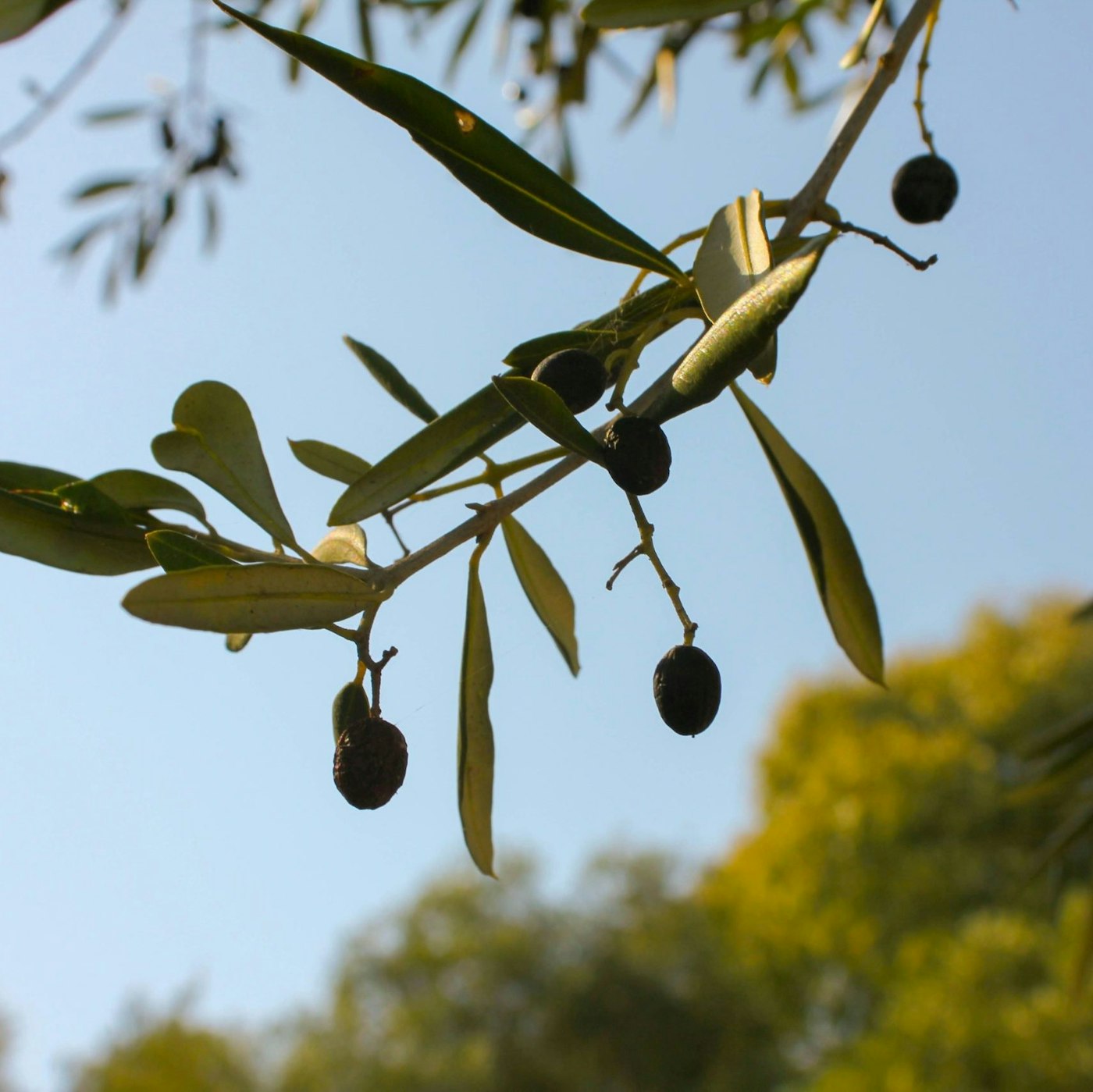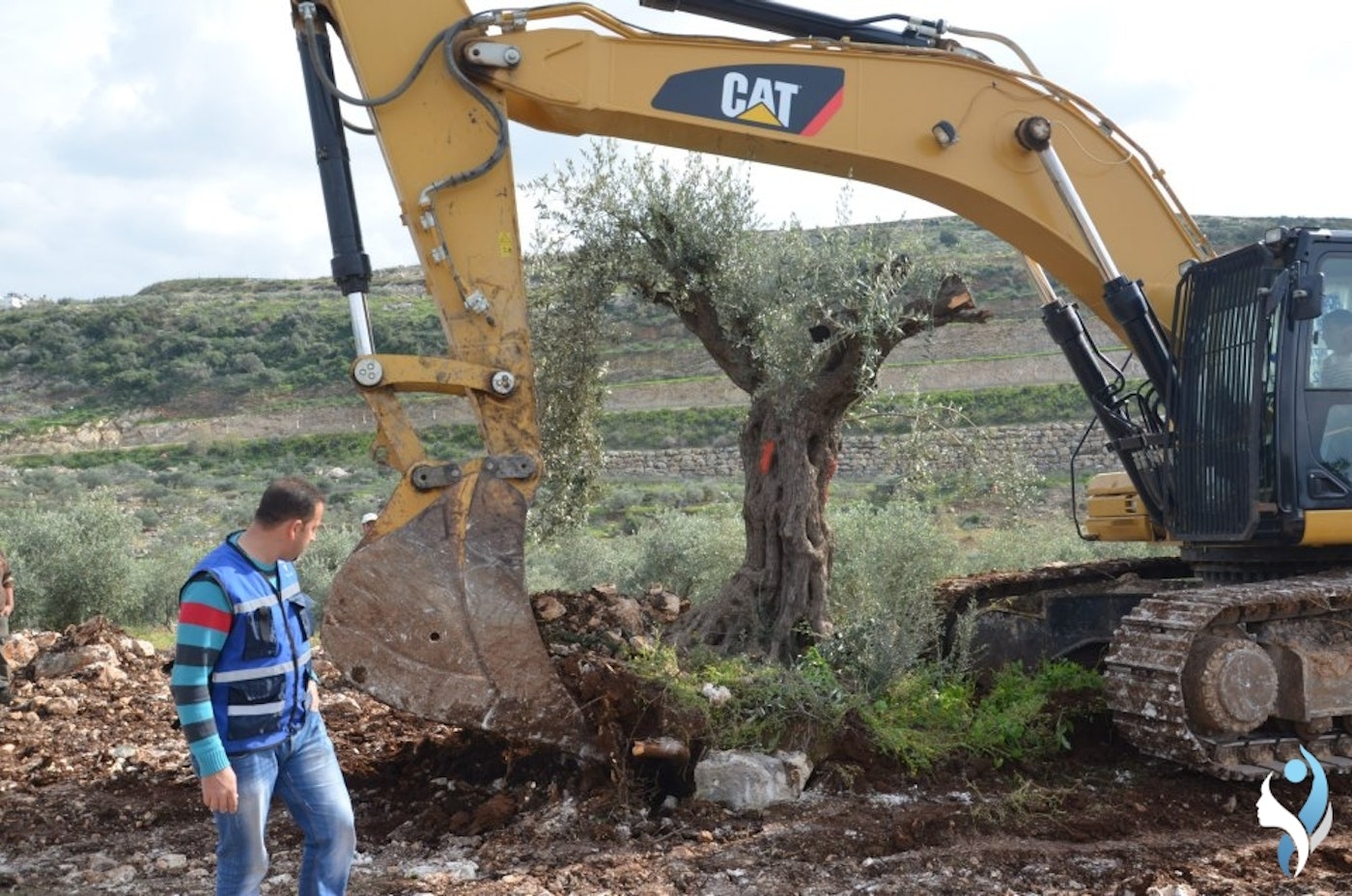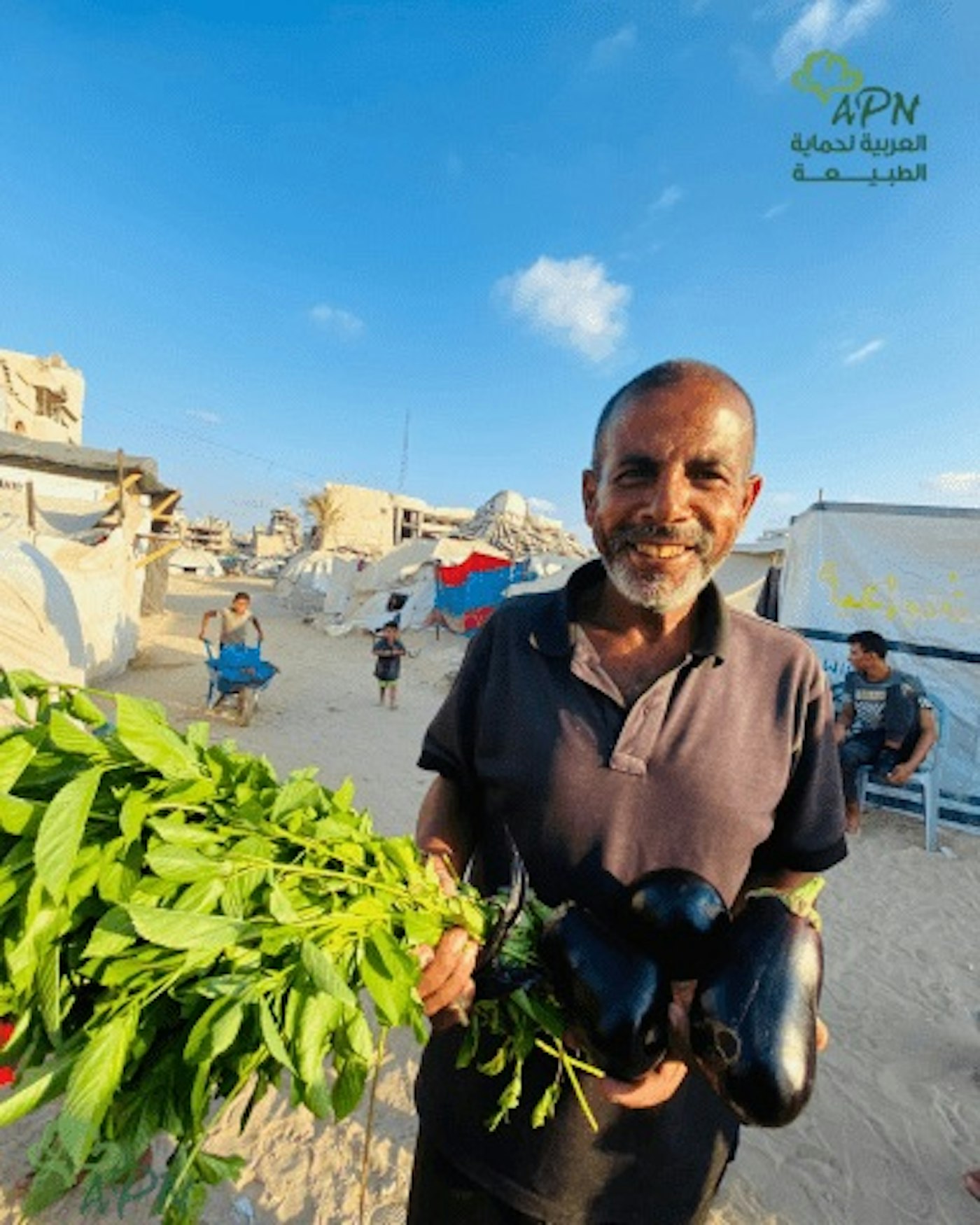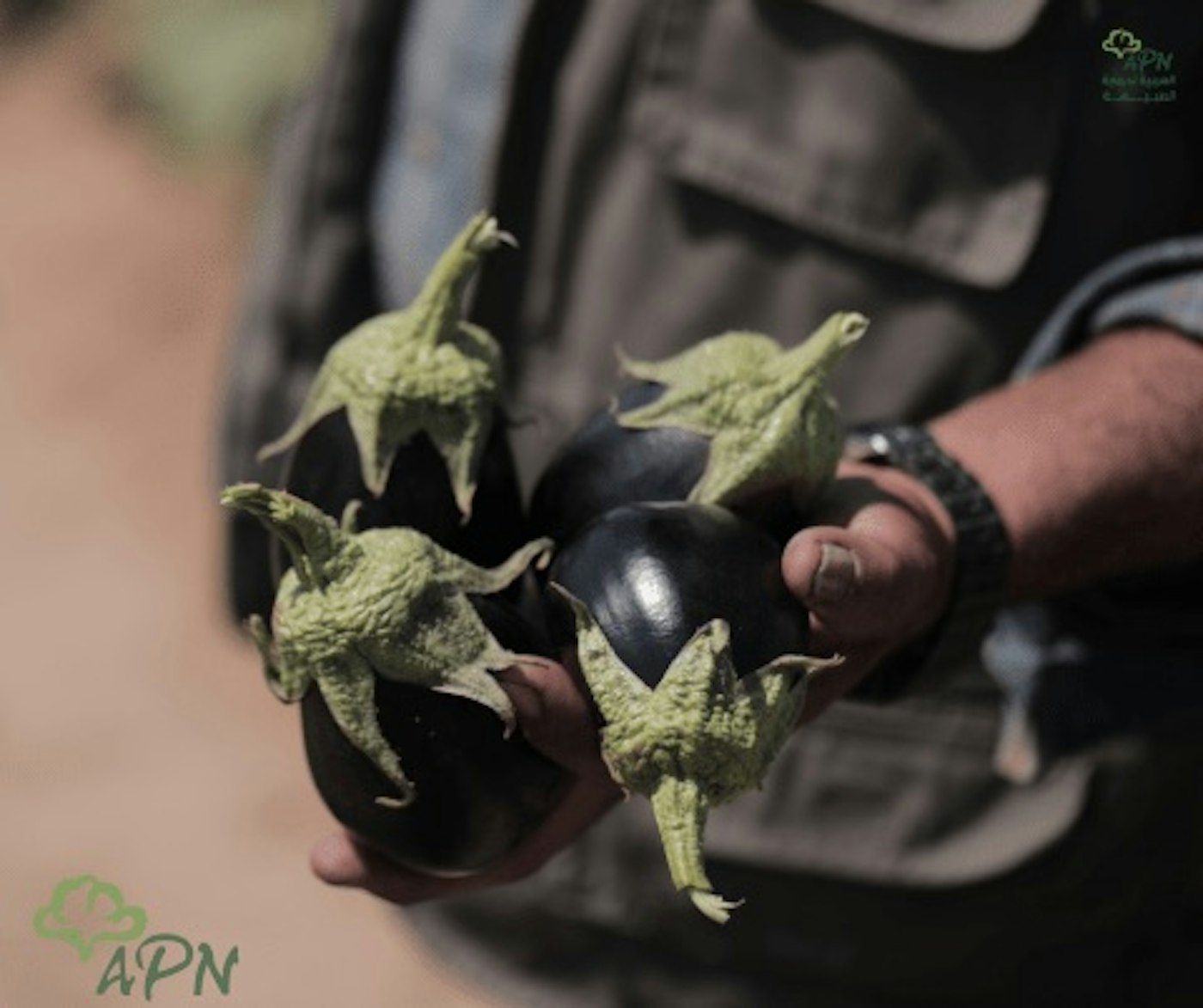Food Sovereignty, Greenwashing & Palestine
by Mareeam Tomomi Ahmed in Palestine on 21st October, 2025

On the 31st of July 2025, the Israeli occupation destroyed the Seed Multiplication Unit in Hebron, claiming that it was ‘abandoned’ state-owned land. They razed it to the ground, wiping out around 70 heirloom seed varieties from the West Bank and Gaza. Seeds that had been preserved over decades in an effort to protect Palestinian food sovereignty. The unit had been maintained since 2003 by researchers from the Union of Agricultural Work Committees (UAWC), with hopes “to preserve Palestinian crops for future generations, considering the escalation of Israeli encroachments.”
Colonialism and the destruction of land go hand in hand, and the devastation it wreaks is synonymous with the death of the native. An element that achieves this is through the destruction of agriculture and the natural ecology of a region, making the land unfit for native biological species. As bombs, showers of white phosphorus gas and other experimental weapons fall on the people of Gaza, the damage to the flora, fauna and water of the land will impact generations of Palestinians who survive the immediate waves of violence.
The man-made famine in Gaza is a classic tactic of the Israeli Occupation Forces. There is a series of systemic controls in place to drive Palestinians out of their land, either through murder or death by starvation. These tactics are decisive and have been unfolding since the end of the Ottoman Empire. Carried out jointly by the British, French and Israeli colonial powers, they reveal a continuous strategy that operates to remove native biodiversity, including that of human beings.
By subjugating dependence on the state in the long term, the colonialist seeks to dismantle the native’s sovereignty of land, food and livelihood.
The International Journal of Middle East Studies highlights that since 1914, the British and French powers introduced museums and libraries which curated a sanitised image of their history and culture in the Middle Eastern context. These trickled down to the schooling system, publications and a short 3 years later, the histories and cultures that were created by the regime were packaged and passed over to the Zionist regime under the Balfour Declaration. Through these structures, the reality of colonial oppression was washed out. The histories of the land were erased before it could be shared with the international community, until an average person in the West had never heard of the Nakba and Palestinian struggle until October 7th, 2023.
The British established contracts with global powers to assert control over land use and port construction in Haifa, Jaffa and other areas of the Levant region. After years of Western control, we see that the Palestinians depend on imports which Israel allocates, and these ports are now hubs for trade, fishing and tourism in Tel Aviv. The man-made famine in Gaza is possible due to the control over ports, fishing and land-use. Consequently, the West Bank and the Gaza Strip were cut off from their connection to the land, sea and its output well before the escalations in 2023.
What is Food Sovereignty?
Food sovereignty means that everyone has the right to access healthy, affordable, and culturally appropriate food. These principles are meant to begin from the most basic stage – having safe land for growing native seeds and the freedom to harvest crops for sustenance and economic freedom. A report from July 2025 by the UAWC (Union of Agricultural Work Committees) highlights how imminent this crisis is, as farmers are forcibly removed from their land and shepherds from their flock, which has accelerated the Israeli destruction of Palestinian food systems.
By 1947, through the UN Resolution 181, 55% of Palestinian land was given to the Jews. The occupying forces have been able to creep into the other 45% of the land by implementing an old Ottoman law, where the state could repossess unused land. Now, Israel controls more than 85% of historic Palestine. Agronomist Saad Dagher outlines that historically, Palestinian farming has been polycultural, where families in the West Bank would grow multiple crops in groups. They can provide for themselves throughout the year, alternating growing patterns with the seasons. Israeli occupation, however, is rooted in westernised agricultural practices and has imposed a monocultural system within the West Bank.

Image Source: Naheel Abu Ghaith
Consequently, by enforcing chemical fertilisers, pesticides and heavy machinery to gain what natural farming achieves, they have damaged the biodiversity. Their extreme methods include aerially spraying Palestinian farmlands with chemicals and dangerous pesticides, flooding farmland with sewage or water and burning acres to the ground. The guise behind this force is that the land is their right and only they can make the ‘desert bloom’ and are taking measures for the health of the farmland. This mission is actualised through The Jewish National Fund. They boast of planting 240 million trees, building 210 reservoirs and dams, and have already developed more than 250,000 acres of land. Additionally, they claim that they have created 1000 parks and provided infrastructure for 1000 communities in Israel.
Tree-dom
The irony is that the forest and fauna they flaunt are all non-native species, including pine trees, to create a European feel to the land. For example, the Carmel National Park is designed to mimic the Swiss Alps and was built on top of the village of Al-Tira in Haifa. Once a thriving agricultural community, this village at the foot of a mountain was deforested and razed. In its place, they planted foreign pine forests that failed to adapt to the soil and required frequent re-planting. The ideal soil for pine is sandy loam and acidic, whereas olive trees, a native species, need alkaline soil—quite literally opposite ends of the spectrum. As pine trees mature, they demand more water and become prone to problems like pests, disease and conflagrations. As a consequence, the 2010 Carmel wildfire, which was the worst in the region’s history, lasted four days from just a single incorrectly disposed piece of charcoal by a teenager. In other words, Palestinian land and species have been destroyed, hit with disease and non-native organisms and suffer from wildfires as a result of the occupation’s control over the local ecology.
Just as the IOF asserts control over what can grow on the land, they dictate what cannot grow, like the olive trees. The Palestinian olive tree is a sign of resistance; like its people, the tree survives through extremities and requires protection. Its olives are a source of food, its oil a source of economic independence and its leaves are honoured in the keffiyeh. A single tree lives for thousands of years, supporting about 800,000 families, or about 40-50 generations.
Since the Nakba, the IOF have been uprooting olive trees or cutting down orchards to prevent any hope of regeneration, a blatant act of eco-apartheid. Since 2000, 3 million trees have been uprooted in the West Bank.
In 1987, they bulldozed more than three thousand olive trees, where their average age was over 200 years. In 2020, resident Barakat Mor’s 400 trees were uprooted from his family orchard when they left the village to go to a wedding. Settlers operate by demolishing homes during the day and destroying land, stealing livestock and burning down trees at night. Basil Al-Adraa, a journalist from South Hebron Hills, reflects, “When you uproot someone’s tree, you try to uproot his or her presence in the land.”
The Million Tree Campaign is a project by The Arab Group for the Protection of Nature (APN), who are known for its slogan, “They uproot one … we plant ten.” In a crucial act of resistance, APN has now planted over 3 million fruit-bearing trees in 2025. Their work is ongoing and seeks to undo the annual destruction to farmland in the West Bank, especially during the harvest season, from October to November. The destruction by the settler organisation and the resistance by Arab and local groups represent the power of food sovereignty, where the IOF want to forcefully remove native connections to the land, whilst the farmers and stewards fight for their right to grow and earn a stable, safe and independent living.
Control in Gaza
Since 2008, the occupation has implemented a ‘calorie count’ in Gaza through controlling the food allowed into the region. As the IOF has control over ports, they decide what products are imported into the Gaza Strip and how much, keeping tabs on Gazans’ calorie intake. Since 2007, the regime has also illegally closed Gaza, taking control of its borders and coastline, so it is free to introduce Israeli produce and seeds into markets, cutting access to healthy and safe foods.
Furthermore, Gaza has only 20% of the share of groundwater from the Mountain Aquifer and absolutely no access to the surface water from the Jordan River. For water, Syrians in the Golan Heights pay four times the cost of what settlers pay, and Palestinian farmers are forced to work in illegal settlements to make a living. Since 2005, in resistance, the Palestinian people have been boycotting Israeli products and seeking natively grown or sourced produce.
“To feed ourselves is to resist, to farm our land is to reclaim our future, and our struggle for food sovereignty is inseparable from our struggle for liberation.” – Union of Agricultural Work Committees (UAWC)
Just like western farming, western ideologies adopt a secular mindset to keep struggles separate from one another. It is equally important to recognise the bombardment and war crimes that Israel has been committing, not only subjecting a genocide but also ecocide and eco-apartheid as well. Israel and its supporting powers threaten the biodiversity and ecology of the Palestinian region as a whole, where chemical and arms experiments in Gaza damage the ozone layer, increase carbon release and cause climate disasters.
They not only impact when fruit and vegetables ripen, but also the volume of yield. On top of the bombing and chemical warfare, pesticides and genetically modified seeds bring another wave of disease, ill health and threaten true Palestinian liberation.
Seed Resistance
The occupation has completely erased the historical farming systems that Palestine was dependent upon. The Palestinian Agroecology Forum shared that agriculture in Palestine was once natural, free and dependent on the ecology of the land and weather. Now, it has become a large-scale, chemical-based agriculture, fully reliant on external production inputs and technologies. Israeli-owned, giant agrochemical companies assert dominance over their production and livelihoods through sterile and genetically modified seeds, agrochemicals, and control over market price. The middleman between Palestinians is the regime and its supporters.
The Hebron seed bank, which was demolished earlier this year, was a means of retaining sovereignty. It contained local varieties of tomatoes, cucumbers, eggplants, zucchini, and other seeds collected from farms on the West Bank and Gaza. Vivien Sansour, the founder of Palestine Heirloom Seed Library (PHSL), said, “These seeds carry options for our future survival as we face climate change and the erosion of agro-biodiversity worldwide. As such, it is urgent that we save and propagate them.”
The external powers, domestic and international markets, are all structured to work against the Palestinian farmer; therefore, their saving and storing seeds is fundamental in preserving heritage and food – another form of Palestinian resistance. Seeds evolve as any other living organism to suit their native land, and the seeds grown and preserved by Palestinian farmers yield good harvests due to their ability to withstand extreme weather and drought. Loss of native seeds means loss of thousands of years of growing, toil and preservation of native harvests.

Image Source: APN
Do’a Zayed, an agronomist and researcher, shares that independence and food sovereignty “starts with control over your own seeds.” She explains that seeds are considered heirlooms, and during the start of any war, farmers go out of their way to deposit seeds at a seed bank. Inspired by the institutions introduced in Syria, the first Seed Multiplication Unit was created in Hebron in 2003.
“As conflicts escalate and the world becomes more dangerous, so our priceless collections of seeds are at ever greater risk.” – Agricultural Researcher Geoffrey Hawtin.
Groundwork in the West Bank and Gaza
Volunteers and organisations based in Palestine have been working to reduce the loss of seeds, of cultivating land and of trees. As displacement warnings are constantly being made in Gaza, organisations like APN support farmers and families with packing up their growing spaces, harvesting what is possible and relocating in the middle of the conflict. This gives Gazans a chance of having an independent source of food, which is healthy and safe for consumption.

Image Source: APN
In Gaza, APN has responded to farmers to cultivate their land through their Revive Gaza’s Farmland Project. The project reflects Palestinian commitment to life and freedom. Since its launch in March 2024, APN and their partners have helped cultivate 310 acres of land across Gaza. Crops grown include zucchini, eggplant, tomatoes, cauliflower, cucumbers, cabbage, chard, corn, molokhia, onions, garlic, and watermelon, among others. The project has also restored 17 greenhouses, supplied poultry and fishing nets, dug and rehabilitated 4 wells and supported 705 farmers, ultimately benefiting 12,217 Palestinians. These nets have been a significant lifeline during the genocide, providing opportunities for food sovereignty. During the interception of recent flotilla efforts, the Gazans were able to fish without threats from the IOF.
Their green resistance is active across historic Palestine and has been a powerful means of fighting the colonial institutions which attempt to erase Palestinian history. Resistance comes in the form of the provision of seeds, seedlings, rehabilitation of agricultural infrastructure, and the direct distribution of produce baskets. From the Besieged Farmer to the Besieged Family – a project to resist the price gouging driven by the occupation’s weaponisation of starvation. In Gaza alone, there are 573 acres of arable land ready for cultivation, meaning plenty of land for self-sufficiency.

Image Source: APN
Palestinian seeds have also been sown across America; Maine, Colorado, Virginia and New York, so when destruction happens, all is not lost. Vivien Sansour describes it as, “the seed as a subversive rebel, of and for the people, travelling across borders and checkpoints to defy the violence of the landscape while reclaiming life and presence.” The Seed Library and its associated projects are now located in the village of Battir, a World Heritage Site in Palestine. Despite the Hebron branch being destroyed, Sansour is ever so hopeful because “even our seeds scare them!”
The Sumod Project in the West Bank works with villages at immediate risk of annexation. The project seeks to strengthen food sovereignty, protect lands against confiscation and ultimately reduce dependence on the occupation-controlled economy. Whilst the system may be built against Palestine, grassroots projects and farmers are determined in their resistance and remain rooted to their land.
Food sovereignty requires multiple facets of resistance. Through farmland, home gardens, irrigation and fertilisation systems, water tanks, even having freedom of possession of tools, and the historically important, the liberty of having your own seeds and seedlings.
Palestinians once had sovereignty over their land, food and natural resources. For decades, colonialist structures have worked systematically to strip that away – erasing land ownership, food sufficiency and identity. Shining a light on these systems, funding organisations on the ground and recognising the global powers that uphold these systems isn’t just solidarity work, it’s resistance. It’s through this work that we can restore true sovereignty and ensure that every aspect of Palestine is free from external control.
References
- Photo credits: Naheel Abu Ghaith
- Seed Bank on the West Bank, Relief Web
- William I. Shorrock, “The Origin of the French Mandate in Syria and Lebanon: The
- Railroad Question, 1901‑1914” International Journal of Middle East Studies,
- The Nakba Did Not Start or End in 1948, Al Jazeera
- William I. Shorrock, “The Origin of the French Mandate in Syria and Lebanon: The Railroad Question,
- 6 Major Ports of Israel, Marine Insight.
- E1 Settlement Plan, Union of Agricultural Work Committees
- United Nations General Assembly, Resolution 181 (II): Future Government of Palestine. Yale Avalon Project.
- The Nakba Did Not Start or End in 1948, Al Jazeera
- Polycultures, Permaculture Association
- The Effect of Monoculture, PubMed Central
- Occupied West Bank & Palestine, Applied Research Institute
- Conflict, Food Security & Development in Palestine, Applied Research Institute
- Israel Under Attack, Jewish National Fund (UK).
- Green Zionism: Uproot Native Trees and Peoples; Re‑plant with Europe’s Trees and Jews, Jews for Justice for Palestine
- Al‑Tira, Haifa, Interactive Encyclopedia of the Palestine Question
- 2010 Carmel Forest Fire, Israel Education.
- The Olive Trees Resist, Platform London.
- Killing Olive Trees Fails to Push Palestinians Out, The Markaz.
- The Wild West Bank: The Lawless Settlers Terrorising Palestinian Farmers, Al Jazeera
- Applied Research Institute – Nature Palestine (APN)
- Resisting Ecological Apartheid, Applied Research Institute
- Annual Report 2024, Applied Research Institute
- Conflict, Food Security & Development in Palestine, Applied Research Institute
- Israeli Agritech: An Invisible Player in the Israeli Settler‑Colonial Project, ASEED.
- Weaponised Sustenance and the Assault on Palestinian Food Sovereignty: GHF as a Tool of Genocide and Domination, Union of Agricultural Work Committees
- Palestinian Agroecological Forum (PAF), Heinrich-Böll-Stiftung, Palestine & Jordan
- Seed Bank in the West Bank, ReliefWeb.
- Palestine Heirloom, Vivien Sansour.
- Seed Banks, War & the Future: Palestine, Ukraine, Sudan, Syria, Yale Environment 360.
- Revive Gaza’s Farmland Project, Applied Research Institute.
- Statistics provided by APN in October 2025 through my correspondence for this article.
- Video: While Israel Focused on Kidnapping Aid Fleet Crew, Palestinians Were Able to Fish, The Canary.
- Photo Credits: APN
- Photo Credits: APN
- From the Besieged Farmer to the Besieged Family, APN
- Palestine Heirloom, Vivien Sansour
- “Sumood” Project Confronts One of the Largest Settlement Blocs in the West Bank, Applied Research Institute.
Mareeam Tomomi Ahmed
Mareeam, 27 from London is a facilitator that aims on getting people outdoors to appreciate nature and community. After being trained in research and tackling colonial thought and history she has shifted to create micro change in the immediate sense by facilitating workshops and third spaces for all minorities to engage in physically. Her interests and aspiration is to create a network of people until the resistance is firm.